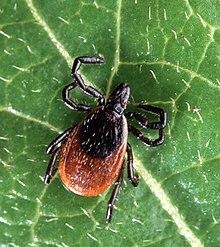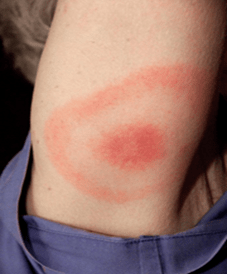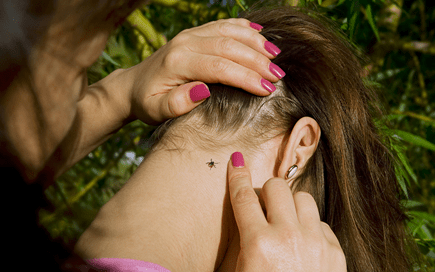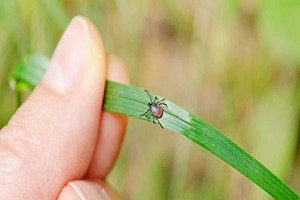MARCH 2021
Addisalem Hunde Bedada DVM, MS
Veterinary Public Health and Preventive Medicine Resident
After the long, dark, winter months, spring is literally a breath of fresh air. In this time, the snow recedes, and the temperatures become more moderate and we can say goodbye to the frigid winter and enjoy the transition before a hot summer kicks in. We spend more time outside during this season. Nevertheless, you would not suspect you are surrounded by dozens possibly hundreds of hungry ticks wanting to feed on you.
Ticks can cause allergic reactions and they can pass diseases onto humans and animals when they bite. These can be dangerous or even deadly. Among the estimated 50,000 human cases of the vector-borne disease reported in the U.S. each year, approximately 80% are associated with ticks, according to the CDC. Lyme disease is by far the most common of the tick-borne diseases and is among the fastest-growing infectious diseases in the United States.
Why are we worried now?
By drawing from decades of studies, scientists of the University of Illinois recently predicted that Lyme disease would appear next in the Midwest States. The researchers revealed that the black-legged ticks that carry the Lyme disease bacteria (Borrelia burgdorferi) in the Midwest are likely to be detected in 42 additional counties of the Midwest by the end of 2021. The ticks were first found in the Midwest in the 1960s in a few counties of Wisconsin and Minnesota. Since then they have expanded into Illinois, Indiana, Iowa, Michigan, Ohio, Nebraska, North Dakota, and South Dakota.
Typical symptoms of Lyme disease include fever, headache, fatigue, and a circular skin rash called erythema migrans appear within 3-30 days. If left untreated, the infection can spread to joints, heart, and nervous system leading to joint swelling and pain, and lack of concentration.

Blacklegged ticks – Source: https://en.wikipedia.org/wiki/Ixodes_scapularis

Circular rash called erythema migrans – Source: https://www.cdc.gov/ticks/symptoms.html
Don’t confuse Lyme disease with COVID-19
As we are entering the time when Lyme disease will be common, it would be very important to distinguish the two diseases. Because both COVID and Lyme are flu-like and share some similar symptoms, one can easily be mistaken for the other in the beginning stages of the diseases. The following are basic differences:
- COVID-19 patients can lose their sense of taste and smell
- COVID-19 is more likely than Lyme disease to cause breathing problems
- Lyme disease often causes a rash at the site of the tick bite
- Lyme disease usually causes joint pain and swelling unlike COVID-19
- Diarrhea and vomiting can sometimes be seen in COVID-19 patients, unlike Lyme disease. Here is a video to learn more.
The way forward
In forthcoming spring and summer, tick borne zoonotic diseases, mainly Lyme disease, could be one of the health threats in the Midwest. Stay safe by taking some simple precautions, such as:
- Reduce time spent in potentially tick-infested habitats such as tall grass and shrubs. Bear in mind that spending time outside walking your dog, camping, gardening, or hunting could bring you in close contact with ticks.
- Reduce leaf litter and mow tall grass or brush that may serve as tick habitat.
- Wear shoes, long pants tucked into socks or pant legs, and long sleeves when outside.
- Use appropriate insect repellent around your ankles, other areas of bare skin, and clothes.
- Treat clothing and gear with products containing 0.5% permethrin.
- Check for ticks after being in areas where there may be ticks. Promptly remove attached ticks without squeezing them (follow CDC guideline). Remove the tick as quickly as possible–do not wait for it to detach.
- If ticks have bitten you, call your healthcare provider. Antibiotics may be given to prevent Lyme disease.
- Ticks can ride into the home on clothing and pets, then attach to a person later, so carefully examine pets, coats, and daypacks.


